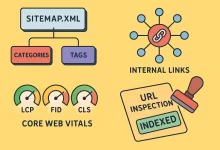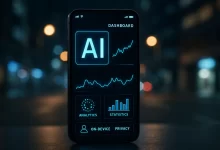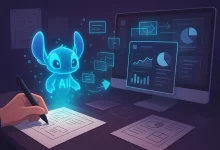
Let’s be real: getting new posts to show up in Google isn’t magic. It’s systems. Fix crawl paths. Clarify intent. Nudge Google with clean signals. That’s what Google blog indexing is about—teaching search engines your site is alive, useful, and technically sound. I’ve used these exact steps on scrappy side projects and brand new client blogs, and the difference between “invisible” and “found” is night and day. Quick story: a few months back I launched a tiny weekend blog on a bare-bones VPS. First week, nothing. I tweaked my robots.txt, shipped a real sitemap.xml, hardened HTTPS, polished internal links, and requested indexing for key URLs. Two days later, first impressions and clicks rolled in. Not viral—just real. And that little...

In an era where data privacy and real-time intelligence are paramount, running advanced AI models directly on consumer devices is no longer science fiction. Edge AI—the deployment of machine learning models on smartphones, tablets, and other local hardware—bridges the gap between on-device convenience and cloud-level sophistication. From local inference engines to full-featured mobile applications, Edge AI is unlocking new possibilities for user privacy, latency-sensitive experiences, and offline resilience. Why Edge AI Matters Today Traditional cloud-based AI relies on continuous internet connectivity and server-grade processors. While powerful, this approach raises three crucial challenges: Privacy Risks: Transmitting personal audio, image, or text data to remote servers exposes users to potential data breaches and third-party misuse. Latency: Even with high-speed networks, round-trip times...

Google Stitch: The AI-Powered UI Design Revolution When Google announced Stitch, its experimental AI-driven UI design assistant powered by Gemini 2.5 Pro, the design community paused to consider a new reality: What happens when artificial intelligence can instantly create production-grade interfaces from natural-language prompts or simple sketches? For many UI and UX designers, the question on everyone’s mind is whether this game-changing tool will make their roles obsolete—or simply empower them to achieve more. What Is Stitch and How Does It Work? At its core, Stitch is an ambitious Google Labs project that harnesses a state-of-the-art multi-modal AI model (Gemini 2.5 Pro) to interpret text, images, and wireframe inputs. In practical terms, designers (or non-designers) can type a description like,...

In a landmark development on May 7, 2025, Microsoft officially announced its support for Google’s Agent2Agent (A2A) protocol, setting a new milestone in cross-platform AI interoperability. This strategic alignment promises unprecedented flexibility and efficiency for enterprise-level AI applications. A Major Step Towards Open AI Ecosystems Microsoft has confirmed it will integrate the A2A protocol into its major AI development platforms—Azure AI Foundry and Copilot Studio. The company has also joined the A2A working group on GitHub, actively participating with global developers to refine and advance this standardized communication framework. This initiative is widely regarded as a groundbreaking move toward overcoming traditional AI operational silos. “By embracing A2A and developing open orchestration platforms, we’re laying the groundwork for next-generation software,” Microsoft...

Google today unveiled “Material 3 Expressive,” a new UI design aimed at enriching Android users’ experience. This latest update focuses on improved personalization, smoother navigation, and visually dynamic interfaces.

Google just dropped a bombshell that could spell the end for ultra-budget Android devices! 🚀 Starting with Android 15, Google will officially cut ties with smartphones and tablets packing only 16GB of internal storage. If your device is still running with minimal storage, it’s time to upgrade—or get left behind! 📱 Why the Sudden Change? Apps today aren’t what they used to be—heavy games, high-resolution videos, and frequent OS updates have made 16GB feel ancient. Google’s latest move ensures every Android device delivers a smoother, faster, and frustration-free user experience. 📦 What’s Changing Exactly? 32GB Minimum: Every new Android-certified device must offer at least 32GB storage. More Space for Your Stuff: At least 75% of this space must be dedicated...


 FoxDoo Technology
FoxDoo Technology FoxDoo Technology
FoxDoo Technology



